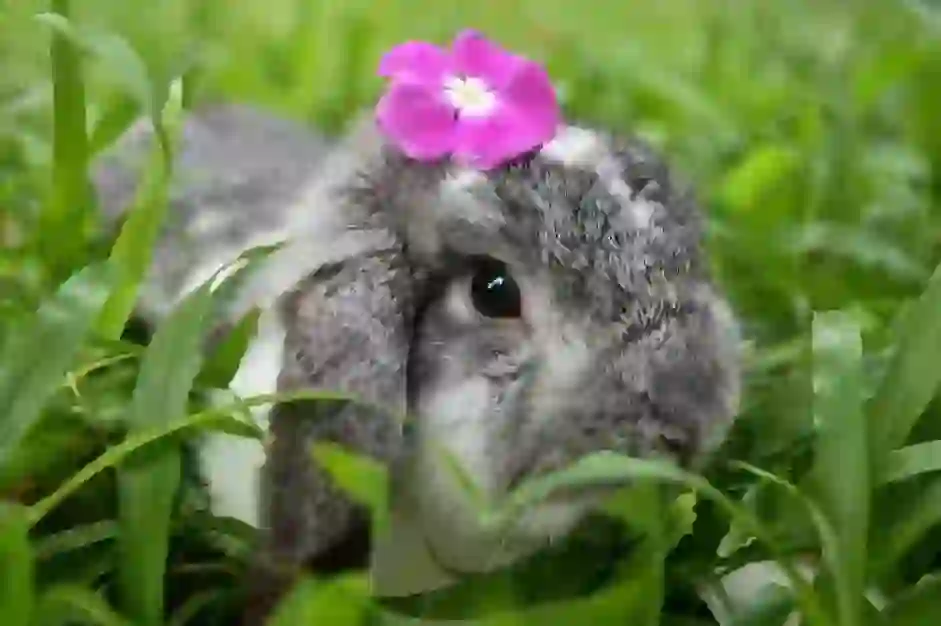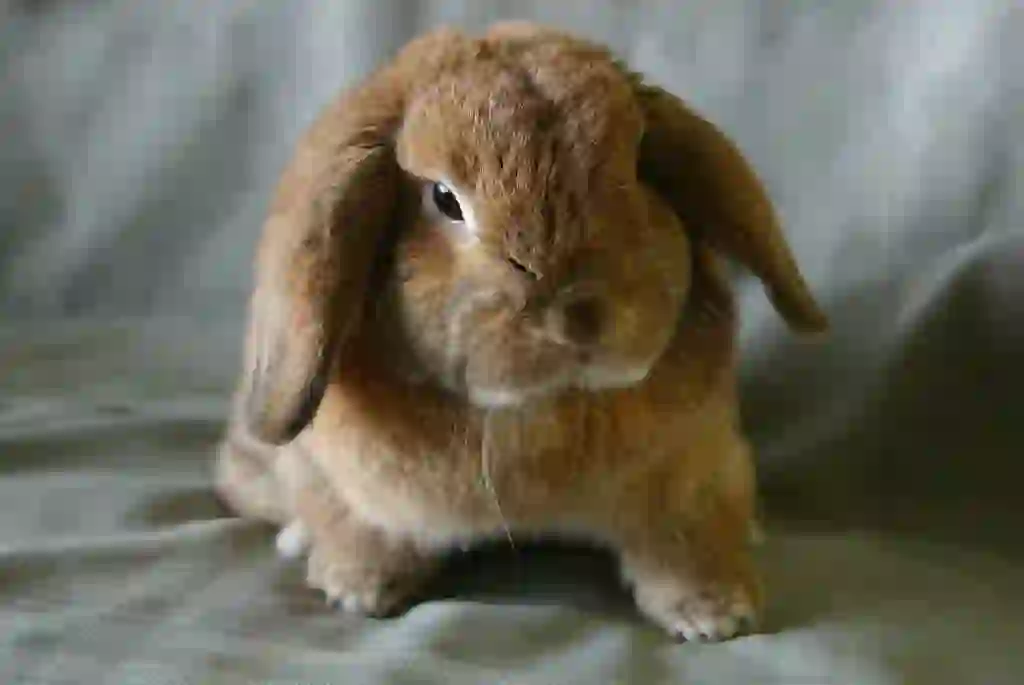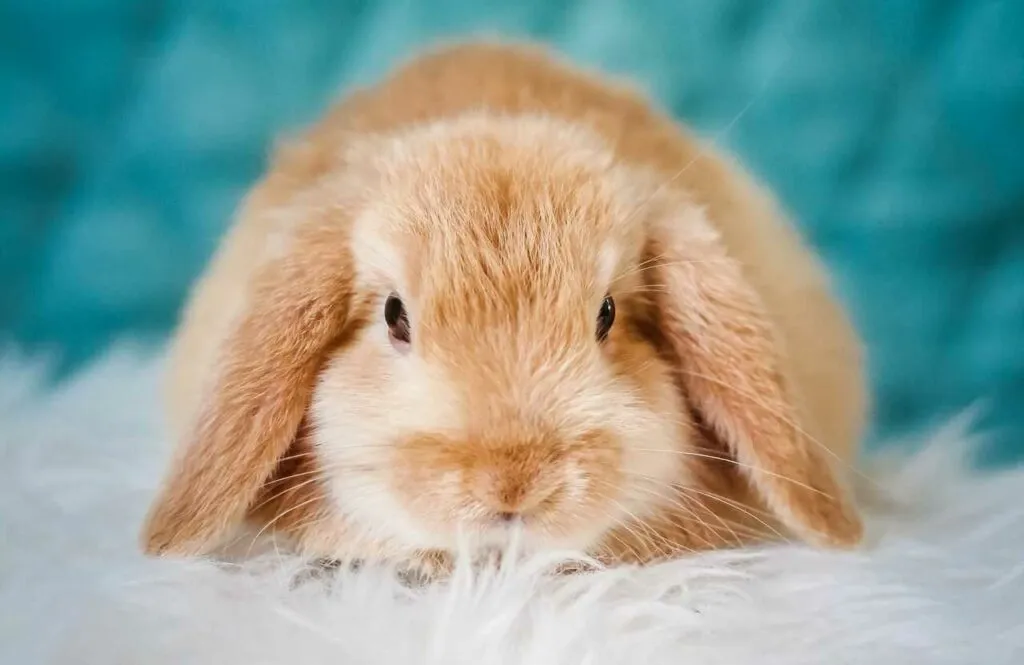
Holland Lop
Holland Lop
Holland Lop
The Holland Lop is a cute rabbit with a small size and droopy ears! It is one of the popular pet rabbits, and it has interesting features and comes in a variety of colors! If you see one somewhere, please observe it while paying attention to what is written here!
Holland Lop Basic Infomation

Country of origin Netherlands.
Senior / male, female More than 6 months and less than 1.81 kg.
Junior / male, female Less than 6 months minimum weight 0.91 kg. ※American Rabbit Breeders Association (ARBA) standards.
In the 1940s, a breeder living in the Netherlands began breeding to create a small-sized droopy-eared rabbit.
The breeds that were being crossed at that time were large French Lops and Netherland Dwarfs, but it didn’t work out and failed.
Then, in 1952, they tried crossing the offspring of French Lops and Netherland Dwarfs that they had first attempted to breed with an English Lop.
After that, they went through several processes, including crossing with Netherland Dwarfs again, and finally crossed with Angora rabbits. As a result, the Holland Lop was born.
It seems that they struggled because they couldn’t produce the ideal rabbit, but in the end, they succeeded in producing a small rabbit weighing about 2 kg.
In 1976, it was brought to the United States and officially registered as a breed by the American Rabbit Breeders Association (ARBA) in 1980.
Holland Lop Q&A

Where does Holland Lop get its name?
The name “Holland” means “Netherlands,” the birthplace of the breed. It is said that it was named by combining “lop,” which means “droopy.”

What are the color variations of the Holland Lop?
・Self (the entire body is almost monochromatic). Black, blue, chocolate, lilac, blue-eyed white, ruby-eyed white.
・Shaded (the color of the ears, nose, tail, and feet is dark and gradated). Sable point, Siamese sable, smoke pearl, seal, tortoiseshell black, tortoiseshell blue, tortoiseshell chocolate, tortoiseshell lilac.
・Agouti (one hair is divided into three or more colors). Chestnut agouti, chocolate agouti, chocolate chinchilla, chinchilla, lynx, opal, squirrel.
・Broken (the base color is white and has spots). Broken and tri-color.
・Pointed white (has points on a white body). Black, blue, chocolate, lilac.
・Tan (two colors are present). Lilac otter, blue otter, chocolate otter, lilac otter.
・Chinchilla (different hair colors are mixed on the body). Steel black, steel blue, steel lilac, steel chocolate.
・Wideband (hair from head to foot is the same color and the area around the eyes and belly is a different color). Cream, fawn, orange, frosty and red.
Brown, blue-gray, ruby red and blue are also available.
Holland Lops are only short-haired.

What does Holland Lop look like?
The Holland Lop has a wide and short head with a bump-like part called the “crown” on the top, and its body is compact.
The eyes attached to the round face that looks like it’s been flattened are round, and the characteristic droopy ears are thick with a rounded tip.
Although it is small, its body is sturdy, giving a sense of strength. The coat is of the rollback type, glossy, and has a soft texture.
The ideal hair length is 2.5 cm overall.

Why are there so many color variations of Holland Lop?
To put it simply, we don’t know the exact reason.
This is just speculation, but as mentioned in the basic information, Netherland Dwarfs, French Lops, English Lops, and Angora rabbits were used in the process of creating Holland Lops.
These rabbits also have relatively rich color variations, so it’s possible that Holland Lops became a rabbit with a rich color variation by crossing various colors of rabbits.

How much does it cost to buy a Holland Lop?
If you want to keep an animal, you need to follow the laws set by the country. This time, I will talk about keeping Holland Lops at home in Japan. It costs about 30,000 to 40,000 yen. Also, rabbits that have the potential to win at rabbit shows are called “show types,” and rabbits that are fine to keep at home are called “pet types.” However, if you want a show type Holland Lop, it may be a little more expensive.

I want to know more about Holland Lop's personality!
Holland Lops have a curious and lively personality, and they may jump or run around when they are happy.
On the other hand, they can be lonely, so they may follow their owners around when they want to be close to them.
Holland Lops also have a calm side and are used as therapy animals in some countries.
Although there is little difference in personality between male and female Holland Lops, there are individual differences in personality, so it is best to remember this as a reference only.
Since droopy-eared rabbits are relatively calm, they can live with other breeds or be kept in multi-pet households. However, there is also compatibility to consider, so it’s not always guaranteed.

What are the diseases that Holland Lop is susceptible to?
Holland Lops are susceptible to “rabbit gastrointestinal syndrome (RGIS),” “otitis media,” and “malocclusion.”
RGIS was previously called “hairball disease.” Rabbits may accidentally swallow loose hair after grooming. If the swallowed hair comes out with feces, there is no problem, but if a large amount of hair clogs the digestive tract, it can cause loss of appetite or inability to defecate.
At that time, it was called hairball disease because the cause was thought to be hair. However, recent research has shown that clogging of the digestive tract is not caused by hair alone, so it is now called rabbit gastrointestinal syndrome for easy understanding.
This disease is said to be likely to occur in almost all rabbits, but especially in short-haired breeds with a lot of hair like Holland Lops, it is important for owners to brush them carefully to prevent it.
In addition, it is important to feed them fiber-rich timothy hay, exercise them, and give them plenty of water to prevent dehydration.
Holland Lops with droopy ears are prone to moisture buildup in their ear canals and are also easy to breed. Therefore, frequent care is essential. If you find symptoms such as itchy ears or pus, it is desirable to take them to the hospital as soon as possible.
Ear diseases may not seem to directly affect life, but if they worsen, they can invade the nervous system and lead to a disease called torticollis, which causes the head to tilt.
Since torticollis can lead to the need for nursing care, if you feel any discomfort, be sure to see a veterinarian without hesitation.
Also, if you are not confident about how to care for your rabbit’s ears, you can consult a veterinarian who can teach you how to clean them.
Since rabbits’ teeth continue to grow throughout their lives, they can usually prevent excessive growth of their teeth by eating chew toys or fiber-rich food. However, for some reason, their teeth may not be worn down properly, causing poor occlusion.
If their teeth are in poor condition, they may lose their appetite or develop diseases such as nasolacrimal duct stenosis, so if you have any concerns about your rabbit’s teeth or eating habits, it is recommended that you consult a veterinarian.

What is the lifespan of Holland Lop?
The average lifespan of a Holland Lop is said to be about 7-10 years, which is about the same as the average lifespan of a rabbit.

Would you like to become a part of the 'Animalbook.jp'?
Turn your knowledge into Q&A and share it with the world. ※Publication will be activated after purchase. Let's share information together!
Holland Lop Type of List

- Holland Lop
Information
Congratulations! You are the first commenter!

Create Your Favorite List!
Holland Lop
Save the animals you love! Build your own list to quickly revisit your favorites later.

Would you like to leave a comment?
※Please note: This is for the purchase of rights to post comments within the article.
Find Your Favorites!
Our shop offers a unique and attractive selection of goods themed around various animals.
Holland Lop References

- うさぎの品種大図鑑 監修:町田修
- Holland Lop Rabbit Specialty Club https://hlrsc.com/
- ウィキペディア https://ja.wikipedia.org/wiki/ホーランドロップ
- うさぎとの暮らし大百科 https://www.anicom-sompo.co.jp/usagi/
- うさぎ総合辞典 http://www.usagi-jiten.co.jp/
- うさぎ専門店 うさぎ舎 http://www.usagiya-shop.com/usagiya-rabbitrynituite.html
- PetPedia https://petpedia.net/article/867/rabbit_group_breeding#toc-14
- うさぎタイムズ https://www.ferret-link.com/usagitimes/
- もねペットクリニック http://www.mone-pet.com/
- うさぎの丘 https://www.usaoka.com/index.html
Holland Lop Introduction of media used

出典:https://unsplash.com/photos/--SDX4KWIbA

出典:https://unsplash.com/photos/bOlOsY-pLgk

出典:https://unsplash.com/photos/byV33HkMneM

出典:https://pixabay.com/images/id-5413169/

出典:https://commons.wikimedia.org/wiki/File:Holland_lop.JPG

出典:https://commons.wikimedia.org/wiki/File:Holland_Lop.jpg

Help Enrich Our Animalbook.jp with Your Media!
We are constantly looking to expand and enrich our Animalbook.jp with amazing photos and videos of animals. If you have any media that you'd like to share, please contribute and help us showcase the beauty and diversity of the animal kingdom. Your submissions will be credited and featured in our encyclopedia, reaching a wide audience of animal lovers.


















